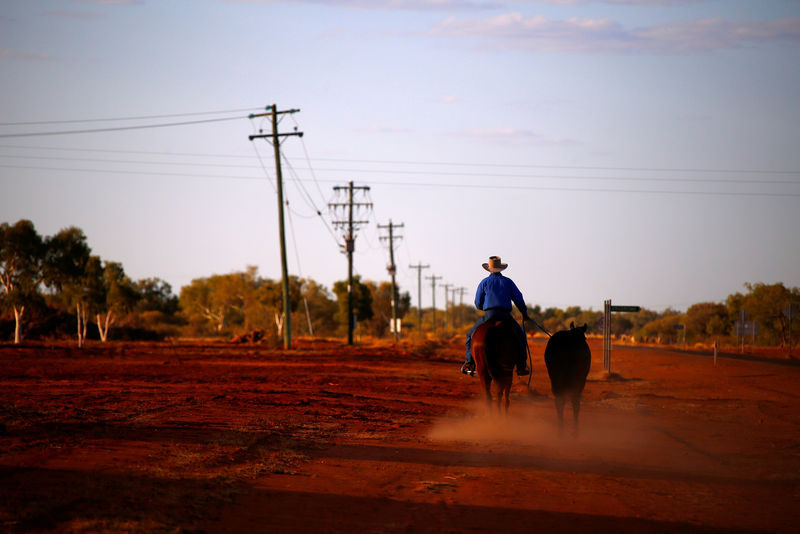(Bloomberg) --
Tasmania wants to turn itself into a battery.
The island state off the Australian mainland’s southern tip is pursuing what its leaders say is the world’s most ambitious renewable energy target, boosting hydro and wind generation to twice its own needs by 2040 and exporting the rest via a planned undersea cable. The strategy could play a key role in weaning the nation’s urban centers of Sydney and Melbourne off their reliance on coal.
Tasmania already gets almost all of its power from hydro and wind, making it an outlier in the nation, one of the world’s most-polluting on a per-capita basis because of its heavy coal and natural gas use both domestically and for export. While the federal government is pushing for a “gas-fired” recovery from the economic hit of coronavirus measures, it is offering a cleaner source of energy.
“We are a nationally significant renewable energy powerhouse,” Tasmania’s Energy Minister Guy Barnett said in a telephone interview. “But we want to take it to the next level and become a globally significant player.”
Tasmania is famed for its wild coastlines and ancient forests, and has been successful in cultivating a global reputation for fresh and natural produce -- President Xi Jinping visited the island in 2014, sparking a wave of interest from Chinese consumers. Clean energy is a natural extension of that image.
At the heart of Barnett’s plan is a solution to store renewable power so that it can still be dispatched when the sun doesn’t shine or the wind doesn’t blow. That will be crucial as several aging coal plants -- which still supply around 60% of the nation’s power -- retire over the next decade, and wind and solar step in to fill the gap.
Tasmania is assessing several pumped hydro projects, taking advantage of the state’s strong water resources to deploy the long-established storage technology. But their viability hinges on building a 370-kilometer (230-mile) power cable under the Bass Strait that can unlock access to the mainland.
The so-called Marinus (NASDAQ:MRNS) Link would add a second undersea cable to the existing Basslink, which is owned by Singapore’s Keppel (OTC:KPELY) Infrastructure. Basslink has suffered a number of outages in recent years and was out of action for several months last year due to a technical fault.
‘Kodak’ Risk
A study by the state’s electricity company, TasNetworks, found the Marinus Link to be commercially feasible, and the national government has given modest financial backing to the A$3.5 billion ($2.4 billion) project. However, some industry experts question whether it is the most cost-effective way to tackle the country’s long-term energy challenge.
Marinus is a “Kodak moment” that fails to consider future technological advances, which could mean the investment never delivers its touted benefits, according to Hobart-based consulting firm Goanna Energy. The biggest threat comes from lithium-ion batteries, Goanna’s principal consultant Marc White said.
“Our concern is that as every year goes by, new technologies will take a slice of the market that Marinus is attempting to capture, until the point where it becomes under-utilized and therefore an economic dud,” he said. “It looks to us as if drawing forward battery technology with some incentives, combined with burning a bit of gas in the early stages, would appear to deliver consumers a better benefit.”
Barnett’s response is that pumped hydro offers economies of scale that no other technology is currently able to provide.
“Competition is healthy, but in terms of pumped hydro the storage we can offer is different to the storage offered by batteries, which are clearly not in a competitive place compared to what we can offer,” he said.
Tasmania’s plan has received support from other states, the energy market operator and the national government. Barnett played down any conflict with federal Energy Minister Angus Taylor’s recent call for a “gas-fired” economic recovery from Covid-19, saying that the country will need a mix of technologies to drive its energy transition.
Read More: The $30 Billion Fight to Fuel Australia’s Post-Covid Economy
Developing hydrogen is another key plank of Tasmania’s energy ambitions, with a target for commercial exports of the clean fuel by 2030. The state’s Hydrogen Action Plan, announced in March, includes a 1,000-megawatt renewable hydrogen plant, as well as funding for concessional loans to promote further investment.
The island’s strong hydro resources give it the potential to produce hydrogen from renewable energy as much as 15% cheaper than other parts of Australia, Barnett said.
He’s hoping that the island’s bold renewables plan will generate over A$7 billion of inward investment for an economy that has traditionally relied on tourism and agriculture.
“What we have is the trifecta of low cost, reliable, clean energy which is what the rest of Australia wants and the rest of the world wants,” Barnett said.
©2020 Bloomberg L.P.
